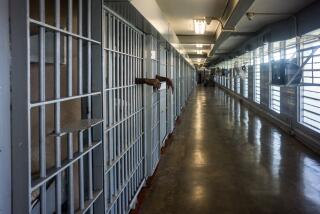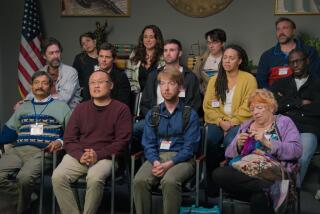Book Review : Evolution of Juries and the Quality of Their Decisions
- Share via
Judging the Jury by Valerie P. Hans and Neil Vidmar (Plenum: $17.95)
Many people think of the law as a finished product, a set of well-established rules written in stone. But that picture is inaccurate.
The paradox of the law is that while lawmakers, judges and legal scholars try to come up with broad rules that are fair and just, almost as soon as such a rule is promulgated, a new set of facts comes along where the rule doesn’t fit. That is, when the rule is applied to this new situation, the wrong answer emerges. So then they have to look for a new and better rule.
In this way, the law is much like physics. The ideal that practitioners strive for is to have fewer and fewer principles that explain more and more facts. But the reality is greater complexity, not greater simplicity.
Evolving Institutions
In human affairs, new situations are always popping up, new wrinkles that the lawmakers hadn’t thought of. In addition to that, society’s idea of fairness isn’t static--it changes over the years. As a result, as legal history amply demonstrates, the law and legal institutions are constantly evolving.
One such institution is the jury, which is so much a part of the American legal system that we don’t usually think of it as changing or changeable. But in the seven centuries since juries first appeared in England, there has been a multitude of changes, including some recent ones in this country.
Valerie P. Hans and Neil Vidmar are academic psychologists who specialize in studying legal issues. In “Judging the Jury,” they apply the methods of social science to assess how well juries mete out justice. After meticulously examining the evidence, they conclude that in almost all circumstances, despite pressures and pitfalls, juries do very well.
Only a few countries use juries, this country far more than any other. Hans and Vidmar note that 80% of the world’s jury trials take place in the U.S.
While that number may be surprisingly high, it should come as no surprise that the United States puts great faith in laymen to decide the outcome of criminal trials and complex civil disputes. Americans have a long-standing distrust of “experts,” and American democracy is founded on the belief that truth resides in the collective wisdom of the people.
The jury was so engrained in the American mind from Colonial times--when it was a bulwark against tyranny--that it is guaranteed in the Fifth, Sixth and Seventh amendments to the Constitution.
Hans and Vidmar quickly sketch the history of the jury and show how it gradually replaced trial by ordeal in England. The notion of an impartial jury is a more recent development, and there is still dispute in the English-speaking world--as well as in the courts here--about the kinds of questions potential jurors may be asked in an effort to eliminate prejudice.
The last thing American trial lawyers want is an impartial jury. They use the voir dire in an effort to impanel a jury that is as partial as it can be--partial to their side. In recent years, some lawyers have hired psychologists, pollsters and statisticians in an effort to come up with a profile of the “right” kind of juror to decide the case at hand.
Outcomes Still Unpredictable
Hans and Vidmar argue convincingly that there is scant evidence these efforts have been successful. No one can predict the outcome of a case from a psychological profile of the jurors, and lawyers who try seem just as likely to choose the wrong jurors as the right ones.
So, too, the authors consider, examine and reject the claims that juries are incompetent (“12 people of average ignorance”); that their decisions are swayed by prejudice or sympathy, and that they disregard the law when it goes against their own sense of justice.
“The hard facts indicate that on the whole the jury behaves responsibly and rationally,” the authors conclude. This applies even in the most difficult cases: rape, for example, where there are usually no witnesses and the jury must weigh one person’s word against another’s. While mistakes can and no doubt do occur, there is no evidence that individual judges or even panels of judges could do better at finding the truth than 12 honest citizens.
Which brings us to the recent changes in the jury system. The Constitution establishes the right to trial by jury but does not require that the jury contain 12 people or that their decision be unanimous. Those practices belong to history and custom.
In recent years, without much fuss or fanfare, the Supreme Court has allowed six-person juries and non-unanimous verdicts. Hans and Vidmar wonder whether those changes are significant.
Most of the time, we don’t think much about juries or how well they carry out the task entrusted to them. Occasionally, a jury returns an unpopular verdict in a high-publicity case--such as the decision that John Hinckley, President Reagan’s would-be assassin, was not guilty by reason of insanity. Then there are calls to change the laws, but no one suggests doing away with the jury system.
Hans and Vidmar have written a trenchant book that explains why not. The jury is a microcosm of democracy, and like democracy itself, it’s not perfect, but it’s better than anything else.
More to Read
Sign up for Essential California
The most important California stories and recommendations in your inbox every morning.
You may occasionally receive promotional content from the Los Angeles Times.










